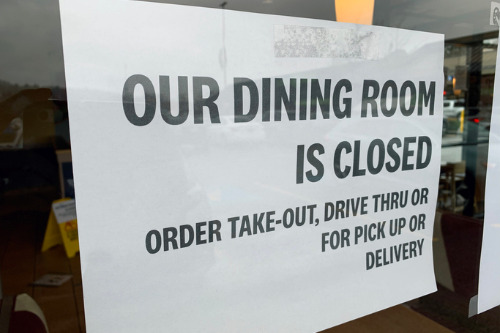

The restaurant business is really feeling the burn from the novel coronavirus pandemic. As countries around the world order societal lockdowns, social distancing, and non-essential business closures, restaurants have been forced to either close their doors altogether or to reduce their volume greatly by only offering delivery and/or takeaway services.
From a general exposure standpoint, these virus-enforced changes impact restaurants in many ways. One silver lining (although restaurant owners will hardly see it in this way) is that their liability exposures will decrease significantly. With fewer staff on premises, and much less (or no) footfall, restaurants remove the potential for slips, trips and falls, which are easily the most ubiquitous hazards in the sector. But that silver lining is somewhat dull compared to the dark cloud of heightened, or different, exposures that restaurant owners must contend with amid the COVID-19 pandemic.
“One increase that we see in concern, or risk, or hazard would be sanitation - making sure you’re meeting the same standards for your restaurant business with less people,” said Kevin Sandelin, director of risk management services at Argo Group. “Ideally, you want to go above and beyond those standards, considering the current climate with the coronavirus, and do more to try to reduce that possible exposure for both employees and customers.
“If you’re keeping your business open for delivery services, there are lots of questions around that exposure. How is that being done? Who’s doing the deliveries? What sort of insurance coverage do you have? Is it third party or is it in-house? Are you using non-owned autos? That’s probably the most direct and clear increase in exposure that you can see in the restaurant business. Now there are businesses who either previously had very little delivery, or none at all, and now have quite a bit or a large volume of it.”
There are many straightforward ways to mitigate some of these risks. In terms of sanitation, there are lots of best practice guidelines from local and national health organisations that restaurant owners can look to. They can also do things like wear gloves, provide hand sanitiser, monitor the number of people within the facility at any one time for takeaway and control the distance between employees and patrons.
“When it comes to additional exposure related to drivers and delivery, a lot of it comes down to whether a business is using a third party, or whether they’re doing it in-house,” Sandelin commented. “The exposure is going to be different, which is why it’s really important for restaurant owners to talk to an insurance broker. It seems like a simple thing, but right now, people might not be remembering that brokers are there to support them. Restaurant owners are busy, they’re shutting down their restaurants, they’re trying to maintain certain things, but this is the time when they should reach out to a broker and say: ‘Hey, this is what I’m looking to do. Do I have coverage for X, Y, and Z? And if not, what do I need to get?’ That’s what brokers are there to do - to support and guide and make sure you’ve got the coverage that you need.”
There are also risks inherent with total restaurant closure. When a business owner decides to close up shop completely and leave their facility vacant, that opens the door to some other types of exposures when facilities aren’t maintained and inspected on a regular basis. Common issues like water leaks, gas leaks, or a pest invasion can all turn into serious issues for a restaurant that’s closed for an unknown period of time.
“There’s a lot that can be done and should be done to mitigate the risks associated with temporary restaurant closures,” Sandelin told Insurance Business. “For example, shutting off the water, where appropriate, but not shutting it off on a mainline that may also be controlling your sprinkler system. There are little nuance pieces that people need to know about their facility in order to get this right. If they’re in an area that’s going to have below freezing temperatures, they should keep the heat on to a certain extent, so they don’t have bursting pipes. If they’re in a warmer area, they should keep the air conditioning to a certain set point so that they’re reducing the chance of mould growth.
“They should also alert their landlord, utility companies and the local police that their facility is closed, dispose of perishable items, get rid of flammable items, remove any cash on premises, and they should try to visit the facility once a day. There are lots of things that restaurant owners can do, but they may not be top of mind right now. They’re more concerned with what’s going to happen to their business, and how to pay employees and cover the rent, but taking care of that facility appropriately while it’s closed is something that folks do need to think about.”
